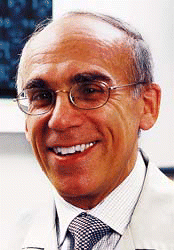Continuous positive airway pressure (CPAP) is the standard first-line approach for moderate to severe obstructive sleep apnea. Although CPAP can alleviate sleep apnea in the majority of patients and may represent a cure for some patients, compliance is often difficult to achieve. Many patients are resistant to wearing an oral or oral/nasal mask at night, and CPAP can interfere with sleep, making patients irritable and tired during the day. ENToday spoke with several experts on how to improve compliance with CPAP.
Explore This Issue
November 2006First, the clinician should confirm the diagnosis. Patients are often misdiagnosed with sleep apnea, said B. Tucker Woodson, MD, who is Professor and Chief of the Department of Otolaryngology and Communication Sciences at the Medical College of Wisconsin in Milwaukee, Wis. Dr. Woodson said that the diagnosis should be based on a complete history and not entirely on the polysomnogram. “A correct diagnosis is critical,” he stated.
“CPAP is the least invasive approach to obstructive sleep apnea, and complications are rare. The most serious problem I’ve seen with CPAP is patients dropping the appliances on their feet. The basic challenge is to gain patient acceptance of therapy,” Dr. Woodson commented.
“The first hurdle is to get patients to try CPAP. Ninety percent of patients come in with preconceived ideas and won’t accept it,” said Michael Friedman, MD, Professor of Otolaryngology and Chairmen of the Section of Head and Neck Surgery at Rush University Medical Center and Chairman of Otolaryngology at Advocate Illinois Masonic Medical Center in Chicago, IL.
Early education by the physician about CPAP can help gain patient acceptance. Dr. Woodson offers education at the first office visit, showing patients the different types of masks and prescribing a mask and machine before patients visit the sleep lab. For problem patients, he introduces CPAP as a gradual process, having the patient try several different types of masks with or without either heated humidification or cool humidification.
“The goal is to keep it [education] simple and not overload patients. There is a variation in CPAP masks and chin straps, and this needs to be explained,” he said. “Work with the patient to iron out the kinks, and don’t give up on CPAP too quickly and resort to surgery,” he added.
Trial Basis
In his practice, Dr. Friedman recommends a two-week trial of CPAP on a temporary basis, explaining to patients that they have other options if CPAP doesn’t work. He lists the reasons to try CPAP, emphasizing that this treatment should allow them to sleep and that this approach to sleep apnea is risk-free.

“You should assume that patients may not choose CPAP, but before they choose another option, they should be encouraged to try CPAP as a temporary measure,” he said. “The Center for Medicare and Medicaid Services [CMS] guidelines state that surgery should not be attempted unless patients have failed CPAP; surgery is not reimbursed unless patients have tried CPAP first. I never perform surgery without a trial of CPAP first,” Dr. Friedman said.

Leave a Reply